Adobe InDesign Photography Book Templates
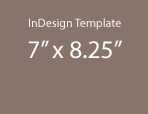
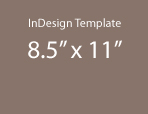


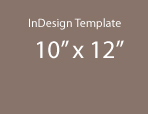
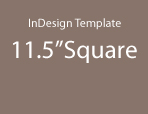
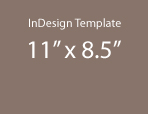
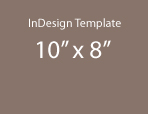
In this section there are eight book design templates you can download free. They were created in Adobe InDesign CS4 on a Macintosh. Each file has a different book trim size, all contain very simple layouts, seven of which have only one image per page. The template titled “10x8MultipleMasters” is for those who understand using multiple master pages with InDesign. This template has eight different master page layouts to choose from.
These templates do not consist of highly designed pages with specialty fonts, this is not a design software program like POD companies offer. These are very basic layouts created at various book trim sizes that guide you in the structure building of a book. These can be used as-is by simply drawing boxes for photographs, using the guides as an aid, and then placing your images into the layout. But if you are adventurous, look at other photography books and don’t be afraid to experiment with creating a custom design and layout. However, take care not to over-design your book. Your photographs should be the most prominent thing your reader sees. You don’t want a lot of competing elements. You can also have more than one photograph per page or make some pages blank. You need to have some working knowledge of Adobe InDesign in order to use these templates and of course, you must own the software program to open them.
The book template master pages have outlines to guide you in placing your photographs on the page. There are three guides: a gray square for your square format photographs, a light red vertical rectangle for your vertical 35mm photographs, and a light blue horizontal rectangle for your horizontals. You must be in “preview mode” to see the colors. Your photograph may not match these dimensions exactly but you can still use them as a guide for placement of your images. You can also place a photograph to go across two pages (a spread). Your photographs don’t have to fit the size of these guide boxes, you can make them smaller or even a bit larger. However, keep elements at least a quarter of an inch away from edges of the page. The guide boxes are centered horizontally on the page, but you can place your photographs off center if you like, again, this is only a basic guide. Once you are done using the guides and your book is laid out, you need to go to the master pages and delete the guide boxes so that they don’t print when you print your book.
There is one other set of guides on the master pages and these cannot be deleted, but don’t worry, they won’t print in your book (you must be in “normal mode” to see these). They are the bright red squares that surround the trim size of the book. These are bleed lines. If you have a photograph or a color block that you want to bleed off the page, they need to extend all the way to those outside red bleed lines. For example, if you have a square photograph and you want it to bleed off all sides of the page, it needs to fill the entire red outside lined box. The reason is, after the pages are printed, the pages are trimmed and if you have not extended your image beyond the page trim, you could end up with white edges surrounding your photograph.
The largest square size book template is 11.5” x 11.5” and has 120 pages. Assuming you will bind your book smyth-sewn, I have created a page count based on the signature block I assume the book will print. In the case of the 11.5” square book, it will probably print in 12 page signatures so your page count must be divisible by 4 or 6. You can reduce or add the number of pages to the book template keeping this in mind. However, be sure to ask your printer if your book is printing in 10, 12, or 16 page signatures just to confirm. Then adjust your page count accordingly. If you are manufacturing your book perfect bound then you are not restricted by this since that binding method does not use signature sections.
I have placed page numbers on the Master Pages of the book templates. Each one has front matter that uses Roman numerals (i, ii, iii) until the first page of the body of the book begins. Then the page count switches to Arabic numerals (1, 2, 3) and starts the page count over. This is standard for books. Typically, page numbers should not appear in the front matter until you get to your first essay (foreword, preface, or introduction), nor should they appear on any blank pages, so remove them from pages in your book where there is no text or photograph. For the pages you want to remove a page number, you will need to select the page in your Pages viewer window, click on the drop menu of the Pages viewer window, select “Override all Master Page Items” and then you can select that page number and delete it. If you don’t want any page numbers in your book, go to the master pages and delete them, the change will be affected on each page of the book.
For-position-only (FPO) text has been placed where an introduction can go, and text indicators are placed for the half title page, title page, dedication, author bio, acknowledgments, and colophon page. The main titles have been kerned out (extra space between letters) so kern them back to 0 if it fits your book title and font better. You add or delete pages that don’t work for your book. You can also add other essays to the beginning of your book such as a preface, or you can add pages for an afterword as well. The afterword would come after the body of the book but before the acknowledgments and author bio. The font in the template is Helvetica. You can change the font style, size, and color to fit the tone you want to communicate.
Remember, this is your book and you can adjust the layout to fit your needs. This is simply a template to guide you as to the basic page structure of a book. You can design and alter this to create your book however you like.
If you plan to print your book POD, Blurb provides InDesign templates that match their printing process. Go to www.blurb.com, log in to your account or create a new account, and go to this URL to download templates specific to their book sizes and output process: www.blurb.com/make/pdf_to_book/template_indesign. Blurb also offers a Book plug-in you can access at this URL: www.blurb.com/apps/indesign-plugin.

